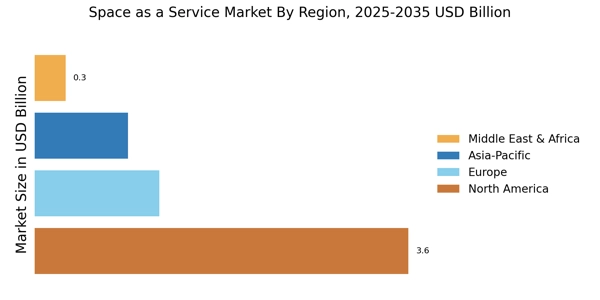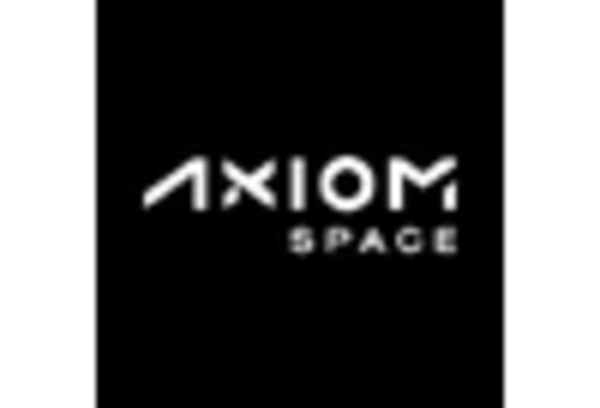Technological Advancements
The Space as a Service Market is experiencing rapid technological advancements that enhance service offerings. Innovations in satellite technology, propulsion systems, and data analytics are driving the market forward. For instance, the development of small satellite technology has reduced costs and increased accessibility for various sectors, including telecommunications and Earth observation. As a result, companies are increasingly adopting these technologies to improve operational efficiency and service delivery. The market is projected to grow significantly, with estimates suggesting a compound annual growth rate of over 15% in the coming years. This growth is indicative of the industry's potential to revolutionize how space services are utilized across different sectors.
Emergence of New Market Players
The emergence of new market players is reshaping the competitive landscape of the Space as a Service Market. Startups and established companies are entering the market with innovative solutions and business models. This influx of new entrants is fostering competition and driving down costs, making space services more accessible to a broader range of customers. Additionally, these new players are often more agile and capable of adapting to changing market demands, which can lead to the development of tailored services. As a result, the Space as a Service Market is likely to witness increased diversification in service offerings, catering to various sectors and applications.
Growing Demand for Data Services
The demand for data services is a crucial driver in the Space as a Service Market. Organizations across various sectors are increasingly relying on satellite data for decision-making, risk assessment, and operational efficiency. The rise of big data analytics and machine learning has further amplified this demand, as businesses seek to leverage satellite data for insights. According to recent estimates, the satellite data market is expected to reach several billion dollars by 2026, reflecting a robust growth trajectory. This trend indicates that companies are recognizing the value of space-based data services, leading to increased investments in the Space as a Service Market.
Regulatory Support and Policy Frameworks
Regulatory support and the establishment of policy frameworks are vital drivers in the Space as a Service Market. Governments are increasingly recognizing the strategic importance of space activities and are implementing policies to facilitate growth. This includes streamlining licensing processes, providing funding for research and development, and fostering international collaboration. Such supportive regulatory environments encourage investment and innovation within the industry. Furthermore, as countries seek to enhance their space capabilities, the alignment of policies with industry needs is likely to create a more conducive atmosphere for growth. This regulatory support is expected to play a crucial role in shaping the future of the Space as a Service Market.
Increased Investment in Space Infrastructure
Investment in space infrastructure is a significant driver of the Space as a Service Market. Governments and private entities are allocating substantial resources to develop and enhance space capabilities. This includes investments in launch facilities, satellite constellations, and ground stations. For example, recent initiatives have seen billions of dollars directed towards building next-generation satellite networks, which are expected to provide enhanced connectivity and services. Such investments not only bolster the infrastructure but also stimulate innovation within the industry. The anticipated growth in infrastructure spending is likely to create new opportunities for service providers in the Space as a Service Market.


















Leave a Comment